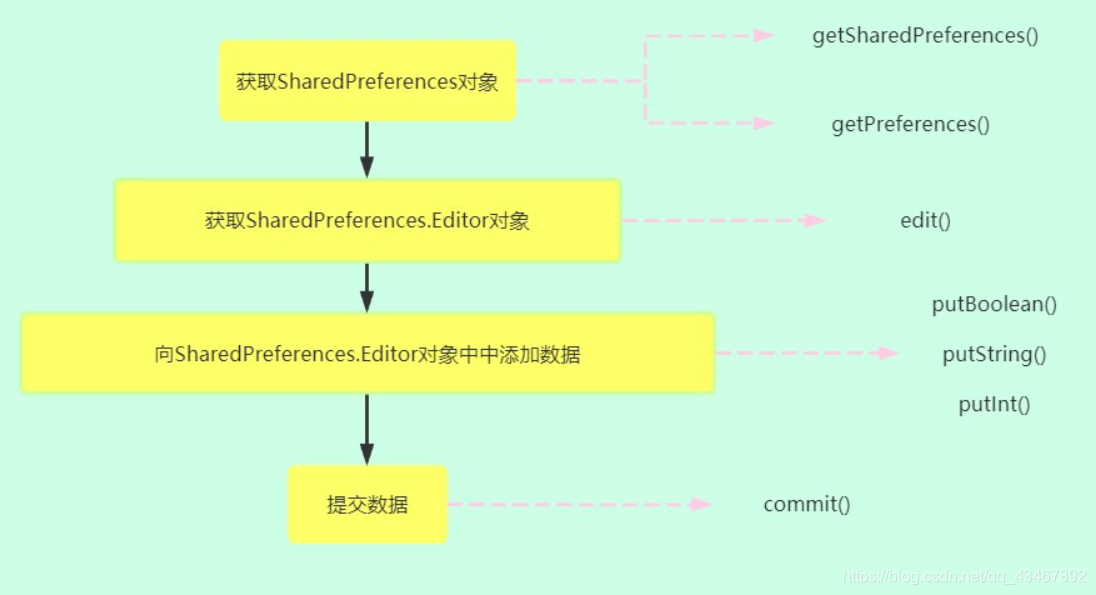一、使用SharedPreferences存储数据的步骤

二、使用SharedPreferences读取数据的步骤

接下来我们通过一个实例来熟悉、理解、掌握SharedPreferences
创建两个页面即两个Activity
第一个页面为登录页面,三个控件:一个username编辑框,一个password编辑框,一个登录按钮。
第二个页面自定义。(记得在Manifest里面注册)
实现功能:第一次输入后台定义好的用户名和密码,则跳转到第二个页面;否则登陆失败。如果第一次登录成功,之后进入此应用,就不用输入用户名和密码,它会直接跳转到第二个页面。
public class MainActivity extends AppCompatActivity {
@Override
protected void onCreate(Bundle savedInstanceState) {
super.onCreate(savedInstanceState);
setContentView(R.layout.activity_main);
EditText editText = findViewById(R.id.editText);
EditText editText2 = findViewById(R.id.editText2);
Button button = findViewById(R.id.button);
//获取SharedPreferences对象
SharedPreferences sp = getSharedPreferences("login",MODE_PRIVATE);
//给sp里面放置默认数据(键值对的方式)
String username = sp.getString("username",null);
String password = sp.getString("password",null);
//如果username和password是admin、123456,则直接跳转到第二个页面
if(username!=null && password!=null) {
if (username.equals("admin") && password.equals("123456")) {
Intent intent = new Intent(MainActivity.this, MainActivity2.class);
startActivity(intent);
}
}else{
//否则给button设置监听器
button.setOnClickListener(new View.OnClickListener() {
@Override
public void onClick(View v) {
String Input_username = editText.getText().toString();
String Input_password = editText2.getText().toString();
SharedPreferences.Editor editor = sp.edit(); //获取editor对象
//如果输入的用户名和密码为admin、123456则将用户名和密码放到editor里面,并将editor进行提交,并跳转到第二个页面
if (Input_username.equals("admin") && Input_password.equals("123456")) {
editor.putString("username", Input_username);
editor.putString("password", Input_password);
editor.commit();
Intent intent = new Intent(MainActivity.this, MainActivity2.class);
startActivity(intent);
Toast.makeText(MainActivity.this, "用户名和密码已经保存", Toast.LENGTH_SHORT).show();
} else {
Toast.makeText(MainActivity.this, "用户名和密码错误", Toast.LENGTH_SHORT).show();
}
}
});
}
}
}